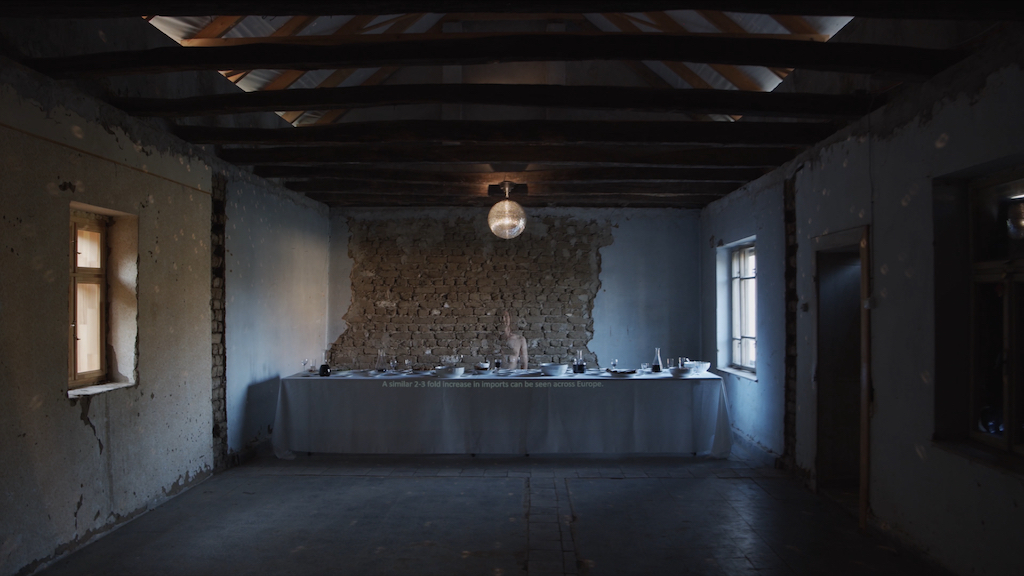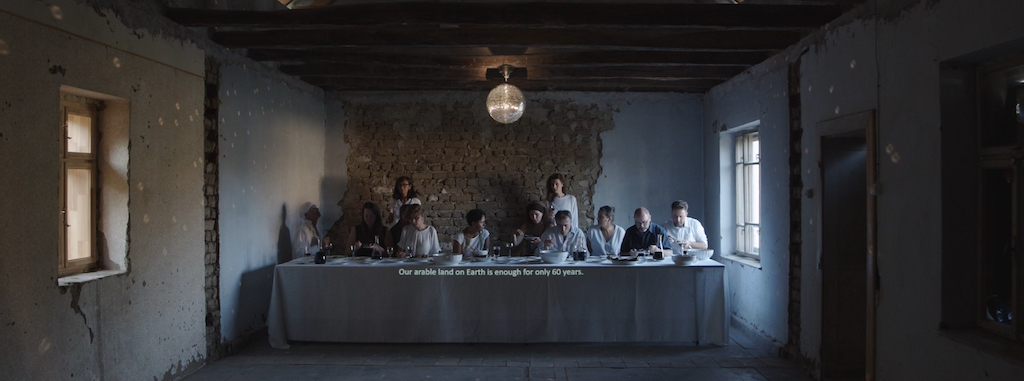In Search of the Last Supper
written by Szabina Peter
It is a generally acknowledged anthropological claim that we could apprehend eating – increasingly throughout the process of our cultural institutions’ formation and the crystallization of their meanings – as a communal act (notably, but not exclusively in the sense of communion), as an organic part of our societies and cultures. The “ritual” ways and acts of gathering to eat together can tell a lot about the norms, values and pursuits shaping our society.
The meaning of the ancient Greek term, agape, is love, hospitality. It is used both to denote the communal eating ceremonies of the early Christians, and the unconditional emotion of the highest order, love calling for deeds. Out of the eight ancient Greek words for love agape signifies only a love which could be learned, trained and willed – self-sacrificing, selfless, emotion. Later on agape’s many meanings included the care and acceptance of the poor, the immigrants and the downtrodden.
The hosts of the Cered agape took a metareflective stance towards the recent role and importance of art, towards the relation and possible connections of life, food and art. One layer of this project draws the attention to the ecologically significant and impactful respects – most prominently the excessive wasting – behind the current Western (and increasingly globalized) trends of food production, transportation and vending. But why is this menu an up-to-date one, which food historians regard to be close to the ‘original one’, and which its creators aimed to craft both tailored to the local conditions and givenness, yet as authentic as possible?
This menu, two thousand year old at least, had transformed into the representation of our fundamental existential problems on the table-cloth – luckily, though, not presented as cheap propaganda, but demonstrating its radicality through its simplicity and modesty, maintaining its capacity all along to avoid being reduced into a banal ecological pamphlet (regardless of how grave the artists themselves consider the importance of environmental consciousness-raising). At the same time both the event / its documentation succeeded to achieve this by not chickening out to ask such questions at face value like:
Is it acceptable that 30% of the food produced ends up as waste, while there are more than 800 million people starving in the world? Isn’t it alarming that in the Global North the number of those described with the label of ‘quality starvation’ – i.e. those consuming many calories, still suffering from malnutrition – reached one billion? The table of the agape offered itself – oft by inviting confrontative contents – at the open horizon of aesthetic reception, in the hope of a more conscious way of living.
This reception, though, is a layered one, given that we could appreciate the work of art as an event, since it could not be consumed in the frames of open temporality by any spectator – as contrasted to the actually invited guests, who had experienced the Agape from Cered as an event-like, once-only form of reality. Important to note that the guests did not play roles, they simply accommodated the situation, thus creating new content for and in the familiar form.
From this perspective, the artwork tried to comprehend thoroughly the following question in a much convivial manner: What amount of resistance such a humble, intimate project – locally relating to the universal – might be capable of in the global social field? For we could interpret it as a site-specific installation – however, as one that quietly emphasizes all along that art has no permanent, canonical, only ceremonial places and spaces.
The artists chose a triptichon as the final form of the video-documentation. Though the videos could be watched and appreciated separately, they are in a substantial conversation, presupposing each other. The first one from the left presents the supper from above, the middle one shows it frontally, while the last one opens up a fictive dimension: from behind the table, in synchrony with the story running on the other screens, 8 times roses the thirteenth guest, in the form of Jesus’s pseudobody.

The Agape from Cered refers to the archaic role of art, and reflects on the ritualistic and religious possibilities of communicating with the transcendent world, the deity from a contemporary perspective. At the same time, it demonstrates the dialectical order of connections analyzing the actual characteristics of the relations between men and world coming to the front increasingly from the Renaissance. The site-specific and eco-conscious aspect of the project actualizes one of the most prominent viewpoints of this period: the physical situation of men governed by the deity.
However, the artists actually chose the simplest and most ordinary method to examine men’s relation to the world – both regarding the venue and the most fundamental needs and activities: the work conceptualizing agape as the paradigm for social togetherness was interested in what reactions the event triggers in the participants, what relations it creates among the invitees.
In order to duly grasp the essence of this project moving on conceptual/definitional borderlines, we should leave behind the closed understanding of art methods. Recently, the participation of the spectator has become a widely accepted element of art practices in discourses recognizing the traditions of happening and performance. In the same way, the participants of the agape, and the spectators of the video-tripthichon could identify their individual reactions, relations, and the conclusions to be drawn through their own approach and reception.
Perhaps the most exciting and important feature of this work lies in its openness and transitivity. We could comprehend the – visual and intellectual – adaptational attempt, the menu reproduced at Cered, the minimally orchestrated conduct, consumption, the documentation and the resulting video-installation of the last supper as an open form of art’s never-ending discursivity, of dissemination’s never-satisfying desire.
